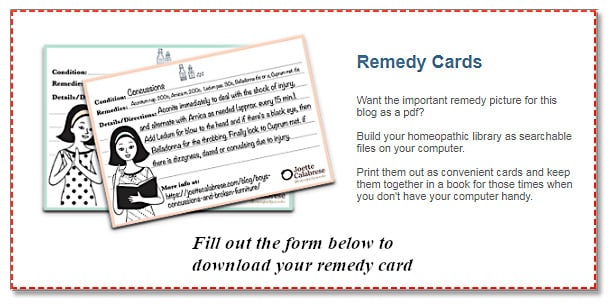🎶 The ankle bone’s connected to the leg bone. 🎶
(You know me; I can’t ignore a song cue!)
Since my blog post lesson last week was about the ankle, let’s move up our lower extremity to the leg itself. A common injury — especially for runners — is shin splints.
Whether caused by stepped-up workouts or plain ol’ repetitive stress, shin splints cause soreness and pain along the length of the leg bone (the tibia). Now, while that may sound like a bone injury, it’s actually damage to the tendons and tissues surrounding the bone.
On its website, Johns Hopkins Medicine advises, “Treatment includes stopping the activity that causes pain.”
Oh, for crying out loud! Doesn’t that sound like the old doctor joke? “Doc, my leg hurts when I do this!”
“Well, don’t do that!”
Hmmm. Is it just me, or does that seem a wee condescending?
Enter homeopathy! (And some real common sense)
Several homeopathic medicines have been known to meet shin splints with a more efficient approach. Sure, rest is beneficial. But a gentle, polite medicine — with no adverse side effects — can help to shorten the required downtime. (And who wants lengthy downtime? Have you ever met a runner? They have to run! It’s in their DNA. Asking them to rest is like asking a mosquito to stop buzzing — nearly impossible.)
In my experience, the most effective homeopathic medicine for shin splints has been Ruta graveolens 200. In fact, regardless of the location on the body of an injured tendon, Ruta 200, twice daily, has been shown to be quite effective. (Remember the ankle sprain blog post? The damaged tendons in the ankle responded beautifully to Ruta!)
Additionally, one might also consider Symphytum officinale 200, twice daily. Why Symphytum? Symphytum is the premier homeopathic medicine for bones, and it also addresses tendons and ligaments. While shin splints do not involve a broken bone, the periosteum (the tissue surrounding the tibia) is often damaged when one suffers from shin splints — indicating Symphytum could be a good match.
In fact, these two medicines, Ruta 200 and Symphytum 200, may be mixed together in the mouth to create a combination medicine — a veritable one-two punch for shin splints!
However, as I always say, there’s more than one way to skin a cat. So, there are a couple of other homeopathics that are also considerations. However, I’ll reserve those for this week’s Memo to Mighty Members*.
But if you’d like to do more reading now, an older blog post of mine might be of use.
From Tendon, Bone, and Cartilage Problems to Healing with Homeopathy details an experience our departed poodle, Buster, had with a leg injury.
Don’t forget, both animals and humans benefit from well-chosen homeopathic medicines used in the very same manner. It doesn’t matter if you’re a woman, man, child, dog, cat, cow, camel, giraffe or penguin — homeopathy works!
So, pass on the good news of homeopathy!
Warmly,
P.S. In case you didn’t notice, this week’s must-have medicine for your kit is Symphytum officinale 200. However, remember: When utilized for broken bones, Symphytum should only be employed after a medical professional has properly set the break!
* If you’re not yet one of my Mighty Members, what are you waiting for? Each week, the Mighties receive additional information in the form of video Mighty Musings or Memos to Mighty Members. (And let’s face it, those memos are actually extra weekly blog posts). Plus, you’ll have access to a private social center to bring sensitive discussions away from the prying eyes of public social media, access to Facebook Lives without joining Facebook, and so much more.
And remember — all of my Mighties qualify for a 10% discount on course purchases. If you need assistance getting your discount, email [email protected] for more information.

 I am a homeopath with a worldwide practice working with families and individuals via Zoom. I'm also a teacher and most importantly, a mom who raised my now-adult children depending on homeopathy over the last 31 years. I lived decades of my life with food intolerances, allergies, and chemical sensitivities until I was cured with homeopathy, so I understand pain, anxiety, and suffering. You may feel that your issues are more severe or different than anyone else’s, but I have seen it all in my practice and in my work in India. My opinion is that nothing has come close to the reproducible, safe and effective results that my clients, students and I have achieved with homeopathy.
I am a homeopath with a worldwide practice working with families and individuals via Zoom. I'm also a teacher and most importantly, a mom who raised my now-adult children depending on homeopathy over the last 31 years. I lived decades of my life with food intolerances, allergies, and chemical sensitivities until I was cured with homeopathy, so I understand pain, anxiety, and suffering. You may feel that your issues are more severe or different than anyone else’s, but I have seen it all in my practice and in my work in India. My opinion is that nothing has come close to the reproducible, safe and effective results that my clients, students and I have achieved with homeopathy.
Call today and learn how homeopathy might just be the missing piece in your health strategy.
Joette is not a physician and the relationship between Joette and her clients is not of prescriber and patient, but as educator and client. It is fully the client's choice whether or not to take advantage of the information Joette presents. Homeopathy doesn't "treat" an illness; it addresses the entire person as a matter of wholeness that is an educational process, not a medical one. Joette believes that the advice and diagnosis of a physician is often in order.
We've provided links for your convenience but we do not receive any remuneration nor affiliation in payment from your purchase.
The Author disclaims all liability for any loss or risk, personal or otherwise incurred as a consequence of use of any material in this article. This information is not a substitute for professional medical advice, diagnosis or treatment.
Dr Prashant Banerjee too advocates this combination for these types of injury.
I would love to compare this medication next to the standard approach (rest and Tylenol) at basic training. Not sure if the military would be amenable to it, however.
Tellurium Metallicum might be helpful being the “long bone pain” remedy? I heard you once say that. We’ve had enormous success with it for growing pains so I wanted to check to see if that would help as well. Thank you!
The best way to know the ability of a homeopathic is to read up on it in your materia medica. It will give you great insight into it.
And Tellurium, indeed, has an affinity with long bones.